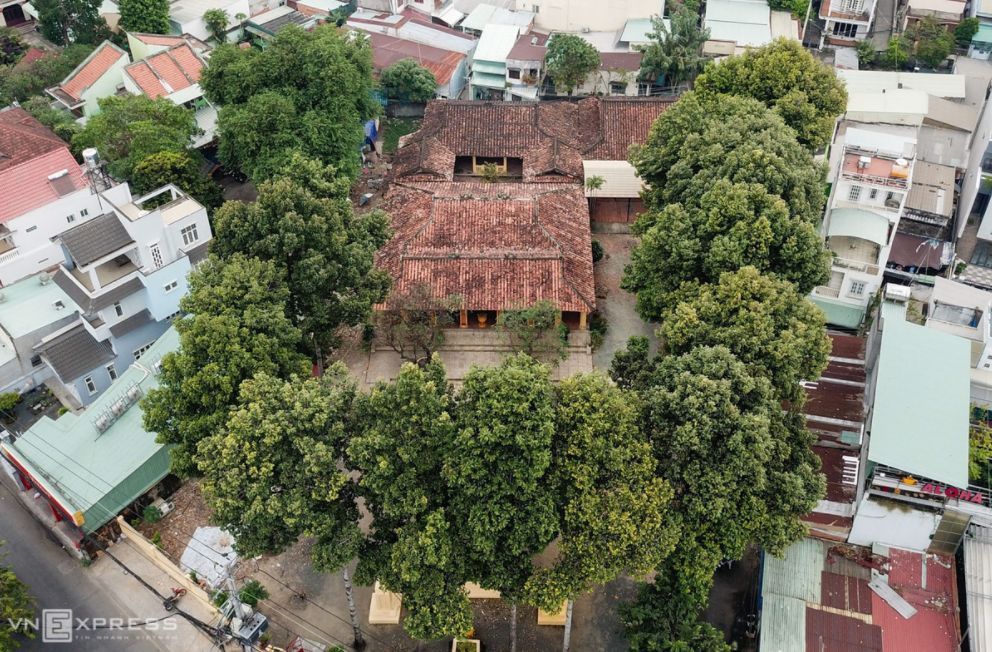 |
| Linh Dong worship house was built in 1823, located on a high hillock with an area of nearly 2,500 m2 on Chuong Duong street, Linh Chieu ward, Thu Duc district. In addition to worshiping the village god, this communal house is also a place to honor Mr. Ta Duong Minh, who explored the land of Thu Duc. Around the year 1679-1725, he and a number of Vietnamese, Champa and Chan Lap residents reclaimed this wasteland, then expanded cultivation in the area. His formal name, which is Thu Duc, was then used to call the land. (Photo: VN Express) |
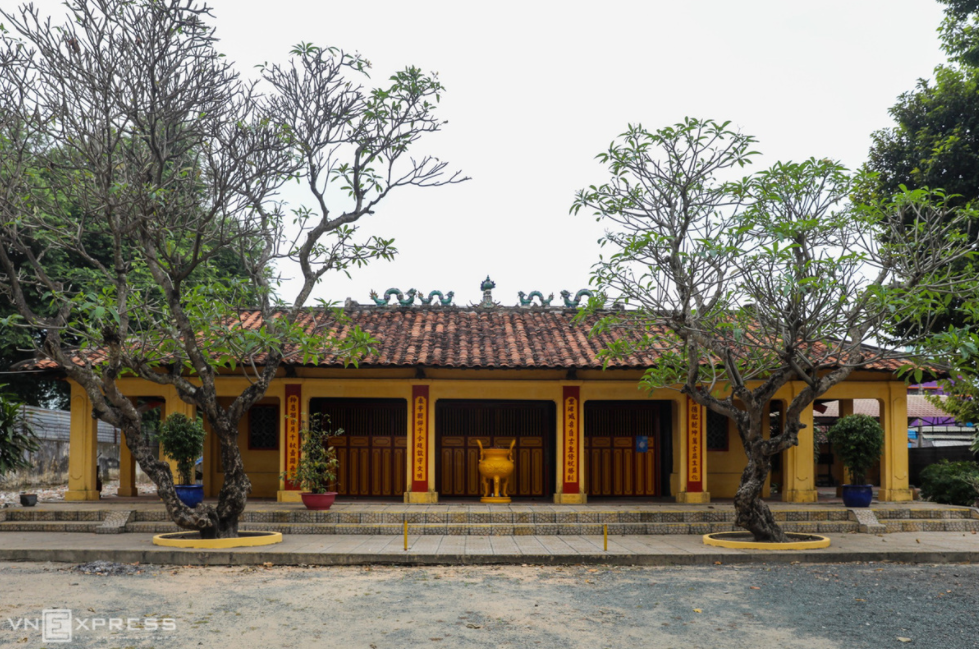 |
| Initially, Linh Dong communal house was built with lightweight materials. In later times, the architecture of the house became more spacious, more solemn with brick walls, tile roofs, wooden structures. The facade facing the East-South direction, built in the form of Tam letter, includes works such as front building, middle building, main hall, guest house, communal yard …(Photo: VN Express) |
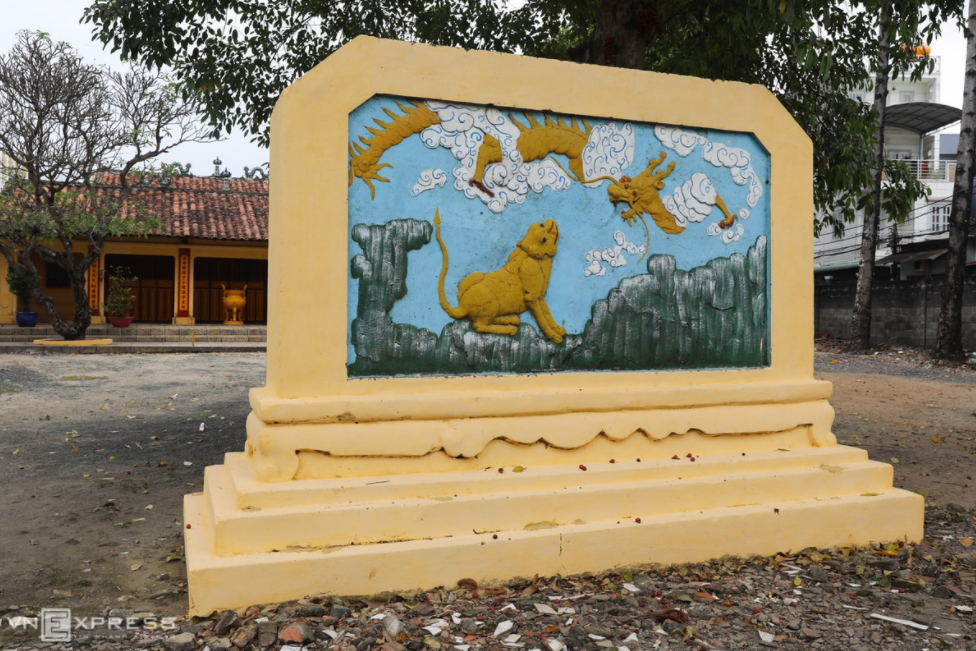 |
| In the middle of the large communal courtyard lies a statue depicting a dragon and a tiger; two fairy animals in Vietnamese folk. (Photo: VN Express) |
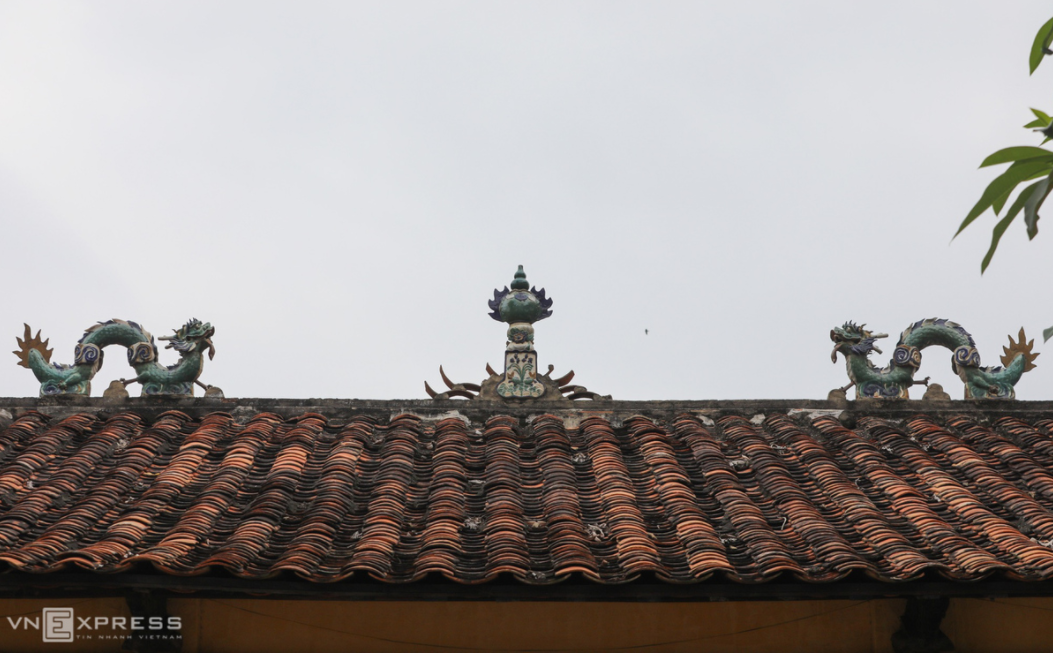 |
| The pavilions of Linh Dong communal house are covered with yin and yang tiled roofs. On the roof of the main hall, there is a statue of two dragons challenging each other for the treasure made of green glazed ceramic, a popular architecture in Vietnamese communal house. (Photo: VN Express) |
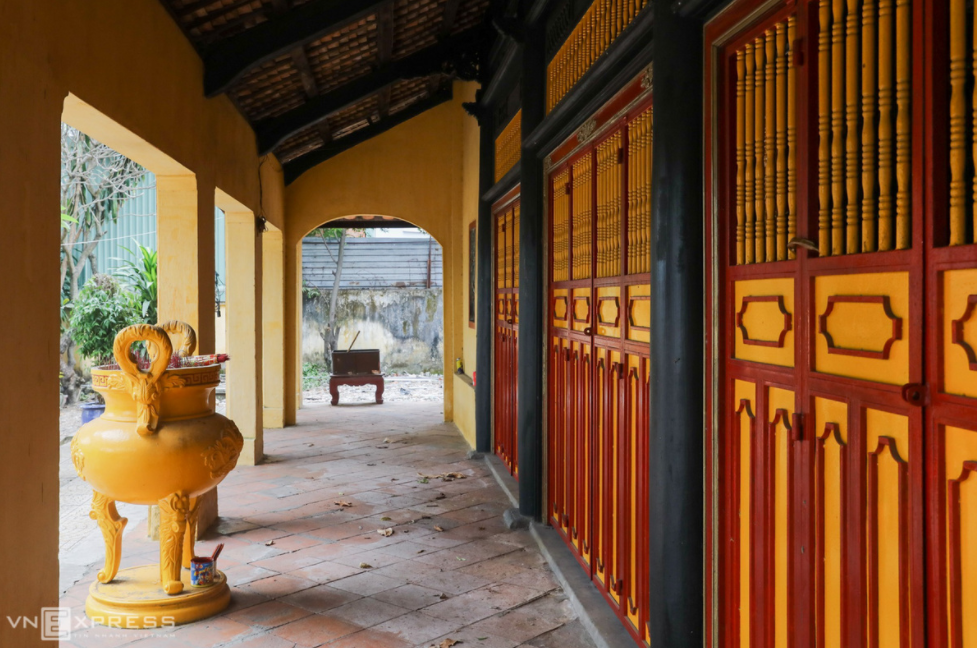 |
| The front of the main hall has the familiar red and yellow tones in the communal house architecture of southern villages. The main hall was built with 32 wooden pillars supporting the entire roof. The door system of the communal house used to be made of wood, but now it is replaced with iron due to termites, rotting and structural damage. (Photo: VN Express) |
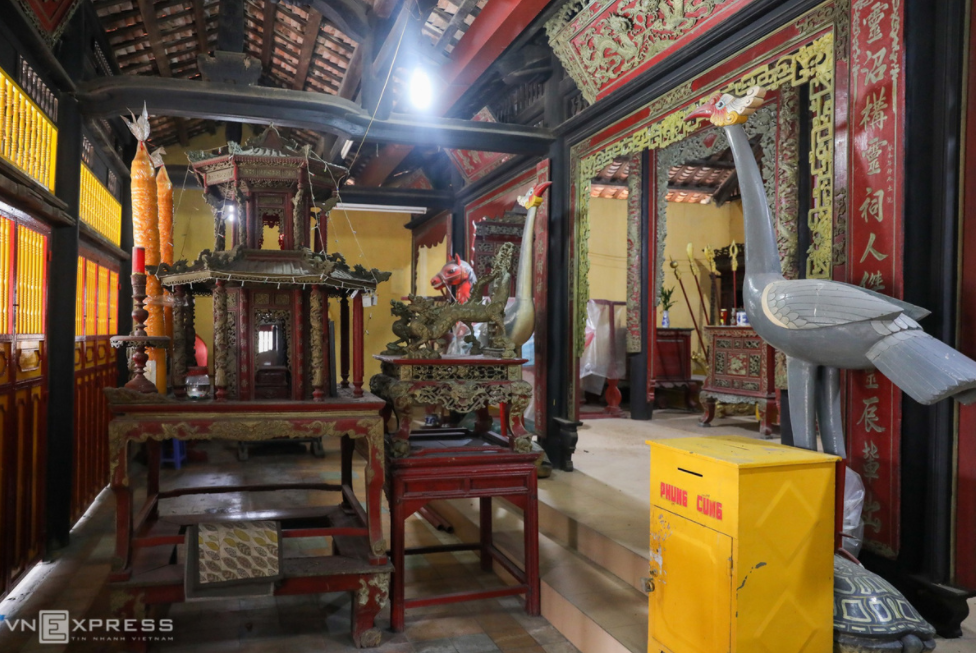 |
| Inside the main hall locates the altars facing each other. The central one is to worship the village’s god. The communal house still preserves the ordination given by King Tu Duc in 1853. (Photo: VN Express) |
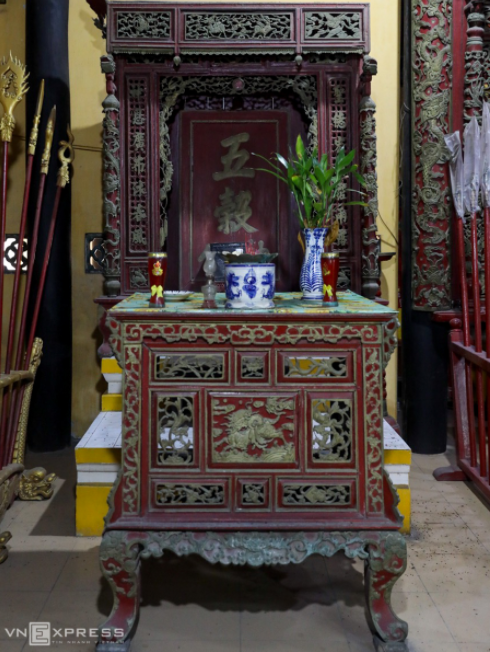 |
| The altar of Mr. Ta Duong Minh, painted with gilded lacquer, is located in the left corner of the main hall. (Photo: VN Express) |
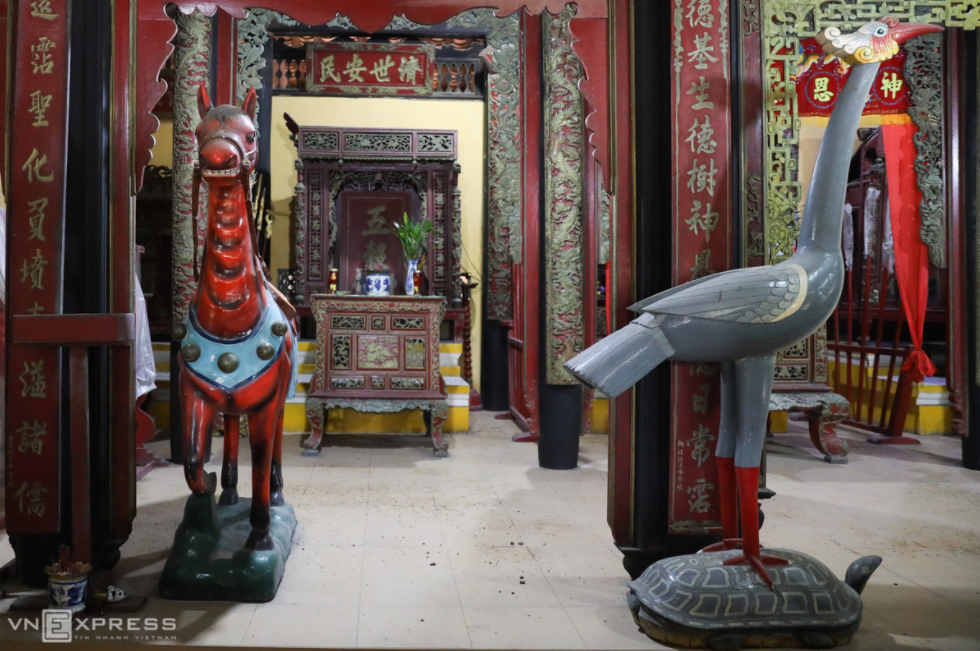 |
| The front building displayed statues of horse and crane standing on turtle backs that are often found in Vietnamese temples. Horses are familiar animals which is often associated with the development and protection of the realms, showing their courage and resilience. Both turtles and cranes are noble folk animals who living a long life, expressing the longevity of human aspirations.(Photo: VN Express) |
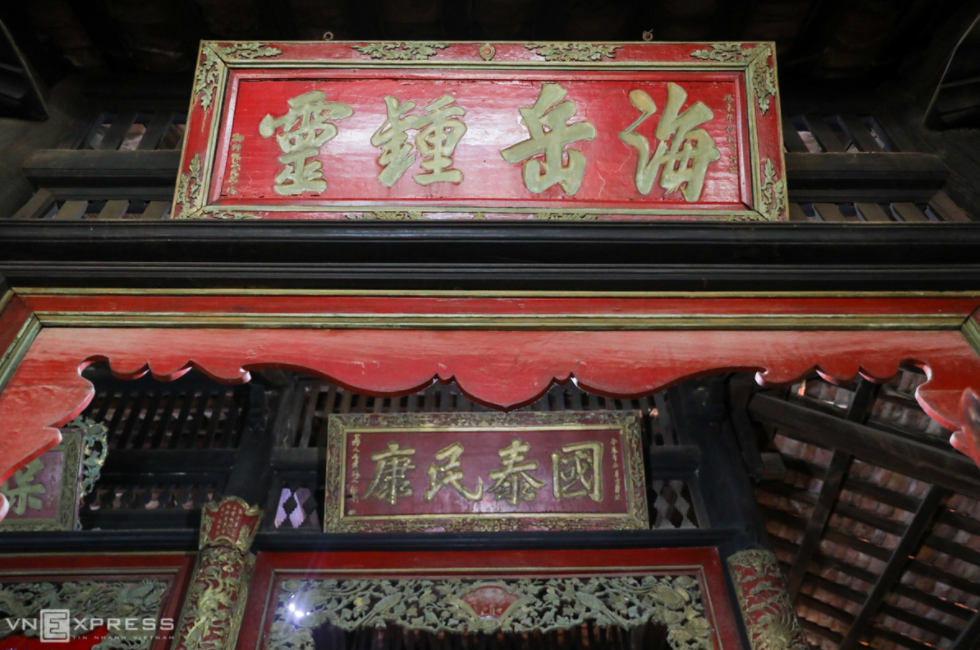 |
| The communal house still preserves many precious objects made of wood, painted with gold lacquer. Every year, Linh Dong communal house holds the main ceremony called Ky Yen, which takes place on October 15 and 16 of the lunar calendar to pray for the nation’s peace. In addition, the communal house also celebrates Thuong Nguyen (January 15), Trung Nguyen (July 15), and Mr. Ta Minh Duong’s death day on June 19 of the lunar calendar. (Photo: VN Express) |
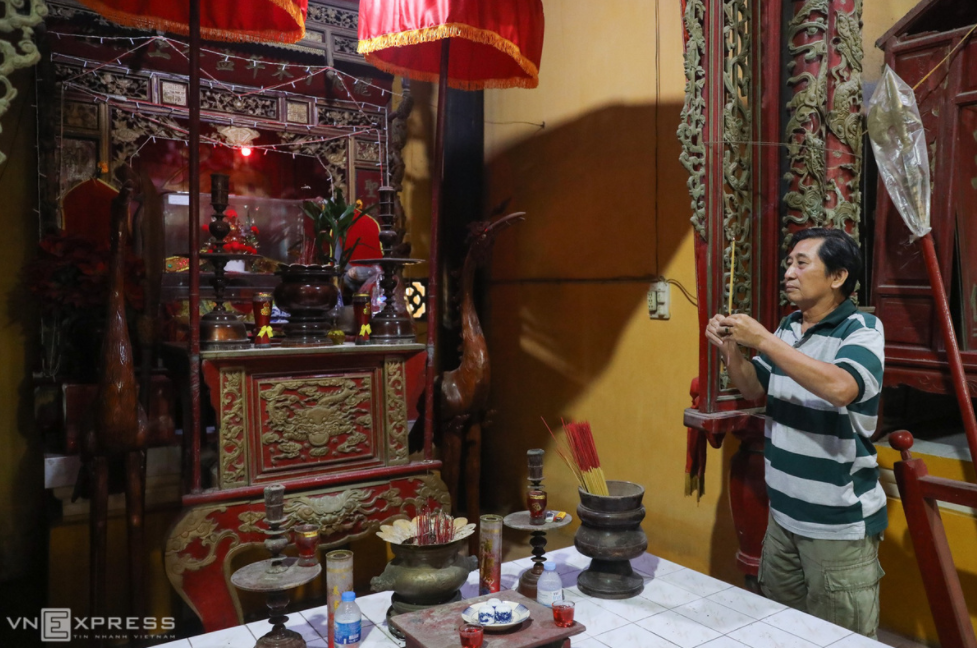 |
| Mr. Bui Van Duc, who looks after the communal house said: “After many times of restoration, the temple still retains the ancient architecture of the 19th century. Some objects in the temple, especially the ordination, are still carefully preserved”. Linh Dong worship house is ranked by the Ministry of Culture, Sports, and Tourism as a national architectural monument in November 2020. (Photo: VN Express) |
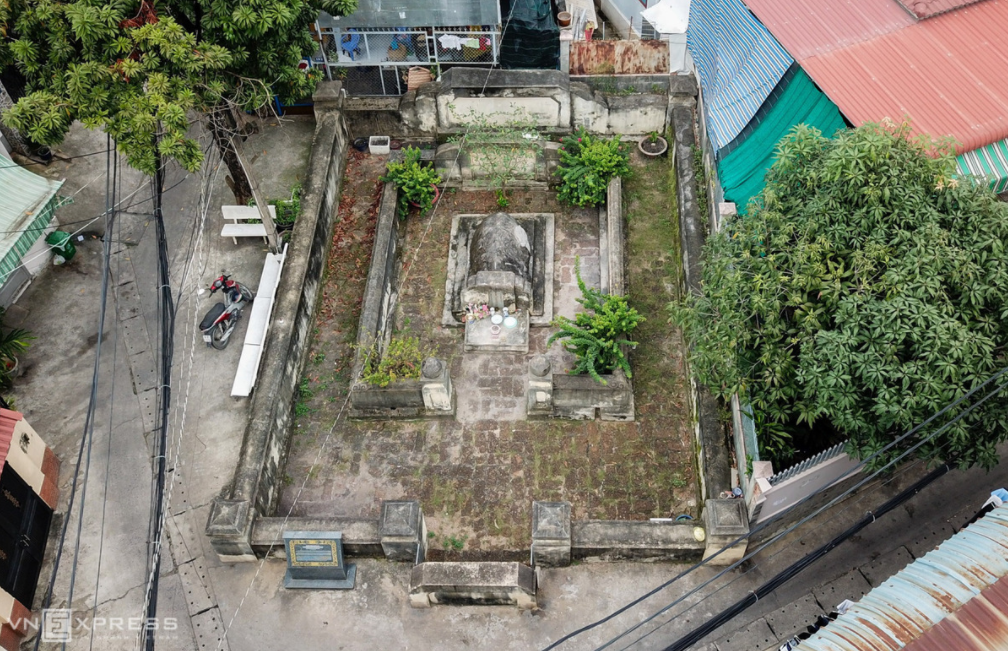 |
| About 500 meters from Linh Dong’s house is the grave of Mr. Ta Duong Minh. The tomb has an area of about 15m2, built in the shape of an elephant, surrounded by two outer walls; located in the middle of an alley in a residential area. (Photo: VN Express) |
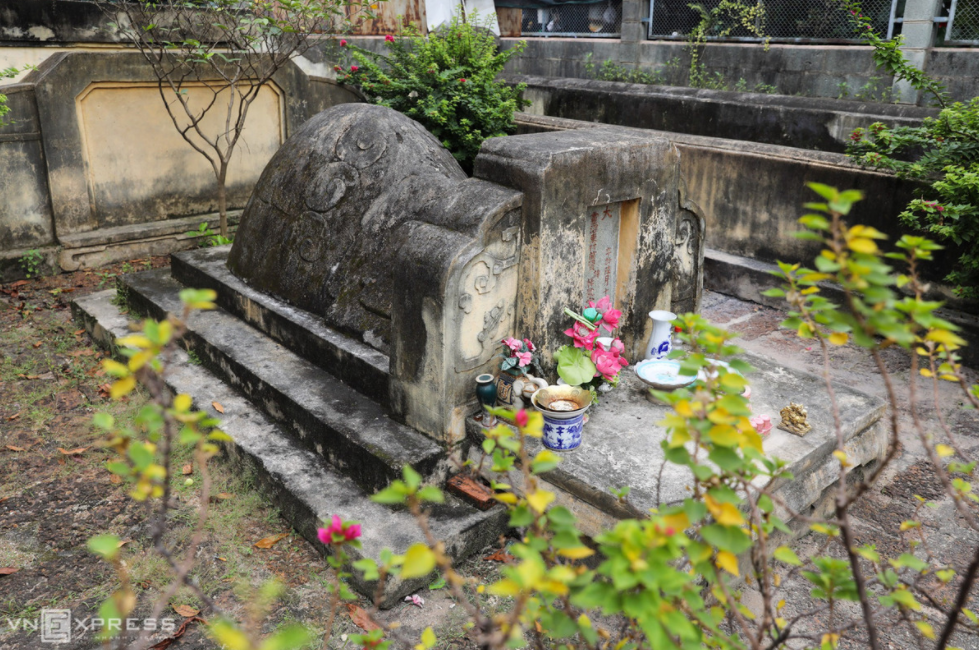 |
| On the stele does not clearly state the year of Mr. Ta Minh Duong’s death but only shows the time of the tomb’s establishment in 1890. In July 2016, the tomb was restored at a cost of 120 million VND. (Photo: VN Express) |



